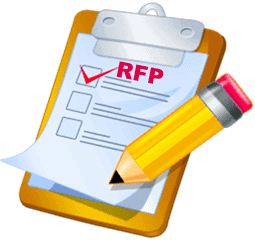A Request For Proposal is an invitation for timber frame companies and contractors to provide bids on work to be done in constructing your home. This competitive bidding process allows you to compare a number of different companies before making a decision and gives you the best chance to get apples to apples bids.
 Some of the aspects to consider include pricing, the company location relative to your building site, the timber framers ability to deliver the products or services, the prior performance of the company and the timeliness in which they are able to complete their jobs and deliver their products.
Some of the aspects to consider include pricing, the company location relative to your building site, the timber framers ability to deliver the products or services, the prior performance of the company and the timeliness in which they are able to complete their jobs and deliver their products.
Click Here to Download a Sample Timber Frame Request For Proposal
Research And Define The Scope Of The Project
A good understanding of your project makes it easier for you to answer questions. Defining exactly what you want in your home and what you expect gives the potential team the information to write proposals that address all your needs and concerns. If the contractor or timber frame company understands the project, they can tailor their proposals to your specifications.
You will be asked questions and asked for clarifications after you submit the RFP make sure you share that with everyone in the process. Time spent researching and defining your RFP will reduce the time you need to spend answering these questions. This speeds up the bidding process, helps to keep the timeline on track and saves everyone a bunch of time.
[quote style=”boxed”]By providing your potential companies with properly prepared, adequate information, you increase your potential for competitive bids with a minimum of questions and aggravation.[/quote]
Create A Reasonable Timeline
Once you’ve committed to this great adventure, time is money. Preparing a timeline and sticking to it is the only way to get this job done in an expedient manner and within the budget. Your RFP should include the following timeline:
- Distribution of RFP
- Deadline for submission of written questions and notice of intent
- Written answers to questions provided to all applicants
- Deadline for proposal submissions
- Notification of finalists
- Interviews of finalists
- Vendors selected
- Contracts signed
Identify The Information Required From Applicants And Specify The Proposal Format
Your package will include construction drawings and any specifications that are pertinent to the completion of your home or timber frame kit. Some packages for specialized work or materials like a timber frame will need to contain additional information related to that trade – make sure to include this in your proposal.
 If you don’t ask for specific information, you may wind up with a jumble of information that may, or may not be useful in your decision-making process. On the other hand, you may receive a boilerplate proposal that doesn’t address the specific needs and requirements of your timber frame home. By providing complete design documents and other specifications you will insure that you don’t end up with apples to oranges proposals.
If you don’t ask for specific information, you may wind up with a jumble of information that may, or may not be useful in your decision-making process. On the other hand, you may receive a boilerplate proposal that doesn’t address the specific needs and requirements of your timber frame home. By providing complete design documents and other specifications you will insure that you don’t end up with apples to oranges proposals.
- The proposal should address the specific requirements of your project. Timber frame construction is a specialized building method and candidates should be aware and familiar with this method of building.
- The company should specify their payment requirements, schedules and costs in full.
- The firm should provide a timeline for the completion of their segment of the project.
- Ask for a brief history and profile of the company that includes its experience with their construction methods.
- The company should include examples of their completed projects. It should also include a brief profile of the project team members.
 Establish Your Evaluation Criteria
Establish Your Evaluation Criteria
Once you’ve received all your RFP packets from the applicants, how will you determine which companies to select?
Of course, the cost is very important. Your budget plan is a big factor in the successful completion of your project. However, what happens if the bids are all similar. You need other criteria to evaluate the suitability of your candidates. Some points to analyze and compare are included below. You may have other areas of concern that you should incorporate in your analysis.
- Does the company have good communication skills, and are they able to transmit and absorb information effectively
- Are the company representatives available for both phone and personal meetings
- Are the examples they provided in keeping with the basic tenets of your project and principles
- Is their timeline reasonable
- Is the company representative forthcoming and open. Did they present a convincing package, explain how they will complete the job and describe the materials they will use.
- Has the proposal openly addressed their costs and payment schedule
- Is the contract reasonable
An RFP is a very useful tool that you should take time to compile. Don’t just jot notes down on a cocktail napkin, but devote time to formulate and develop a Request for Proposal that succinctly and clearly states the information you wish to impart and expect to receive in return.